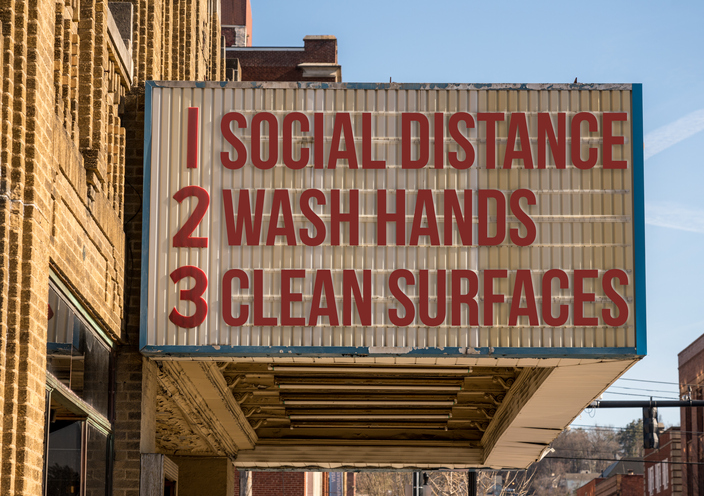The virus outbreak that started in Wuhan and spread around the globe will eventually end and worldwide travel will resume. However, the fear and new social patterns might linger for quite some time after that in what could best be described as ‘post coronavirus stress disorder’ (PCSD). Such a mass behavioral shift dictates that hospitality will need to adapt yet again to meet any demand changes.
While people will always want to vacation in far-off lands or visit new cities for business trips, the new normal of social distancing will result in many travelers developing a profound and lasting stigma against widely shared spaces including hotel lobbies, packed restaurants, communal office setups and even guestrooms in properties with high turnover such as those for the big chains’ downtown locations.
In the short-term, this favors properties of the following characters:
- Small or boutique hotels of roughly 75 rooms or less, where the lack of size naturally inscribes fewer human interactions and less crowded spaces
- Rural properties that are within a comfortable driving distance from a major urban center so they can capitalize upon the staycation renaissance
- Resorts where there is a strong feeling of remoteness and less direct contact with the outside world, especially those properties that have a natural geographic barrier to provide isolation from neighbors
- Cabin-style properties that encompass a collection of fully detached buildings rather than a single structure where guestrooms directly abut one another
- Hotels with large, open restaurants (or other trafficked outlets) where management can afford to remove some tables in order to increase the gap between dining groups
- Home sharing platforms where the prospect of staying in an apartment or house implies more separation from others due to the lack of contact with staff or other guests
If your hotel fits within the first five criteria then, great, you have a solid marketing angle to play with right now as well as once the travel restrictions are lifted. If not, then you will have some serious work to do to restore consumer confidence. Critically, though, the sixth bullet point represents the possibility of another looming crisis for properties all over.
Before the emergence of COVID-19, the ground was already shifting in favor of alternate accommodation providers, particularly amongst millennials and centennials. If you were to do an offhand survey of these two younger generations, you would likely find that any leisure travel search was Airbnb first then everything else second. As a caveat to this, groups and corporate travel haven’t yet seen a significant budge here due to the unique advantages of traditional hotels for these segments.
This paradigm is only going to become more entrenched in a world of customers who are inherently afraid of high-touch environments like an internationally trafficked hotel lobby or elevator corridor. Moreover, Airbnb has done a good job in navigating the uncharted waters of empathetic corporate responsibility during the coronavirus pandemic, as demonstrated by the quickly enacted ‘More Flexible Reservations’ program which implemented a 100% refund policy for the rest of spring as well as a new search-by-cancelation-policy filter and incentives for flexible hosts.
Despite this mounting challenge, however, with the right attitude, proper updates to your operations and smart marketing tactics, any hotel can succeed in the post-COVID hospitality landscape.
Some ideas to this end might include:
- Making sure that your housekeeping and public area cleaning SOPs are state-of-the-art as this is one area where sharing economy locations may not be able to match you
- Promoting these new SOPs consistently and repeatedly through all marketing channels so that guests understand you are addressing this issue with the utmost seriousness
- Embrace the concept of ‘cleanliness theater’ whereby it’s no longer just about having your cleaning practices be flawless yet invisible but letting guests see with their own eyes that you are diligent in this regard (for example, having your custodians clean the front desk during peak check-in and check-out times as well as in the middle of the night)
- Prior to COVID-19, I would not normally recommend deploying many ‘people free’ technologies like a self-check-in station as they dilute the perception of great service inferred by a smiling front desk agent, but now all bets are off
- See what changes, if any, you can make to the furniture in your public areas so that visitors are more socially distanced from each other
- Discuss traffic flow issues for your restaurants and meeting spaces to attain fewer instances of mass groupings through the staggering out of dining covers and conference break periods or by removing corridor-narrowing obstacles
- Implement new technologies to enable more work-from-home situations so you can maintain service delivery on a leaner team or so you don’t have to scramble once more if another lockdown occurs in the near future
- Again, be prepared to start advertising any new protocols for the above four directly to customers who nowadays will be keenly receptive to this type of messaging
I hope that you find these ideas helpful. Above all, stay positive as we will all make it through this if we work hard to nimbly adapt to this brave new world we have just entered.
